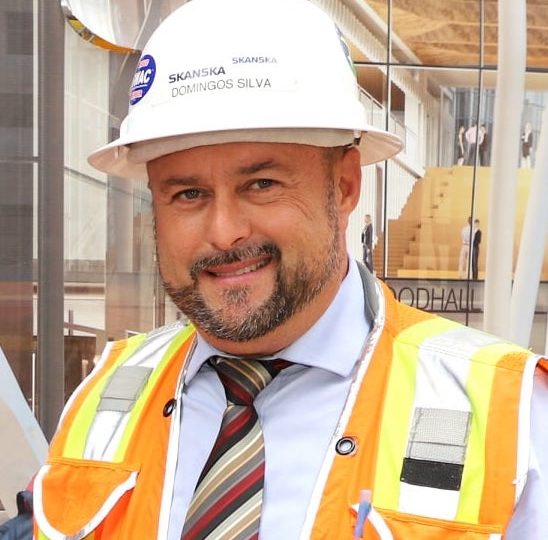Native from Portugal leaves his mark on iconic Big Apple buildings
After working in the construction of LaGuardia Airport’s Terminal B, in Queens, the Portuguese architect Domingos da Silva, 51, started a new work routine this Thursday: he now commutes every day from his home in New Rochelle, near Manhattan, and the busiest train station in the Western hemisphere, Penn Station, in New York City’s heart.
“I had been here only twice before,” says the architect, in an exclusive interview to the LUSO-AMERICANO newspaper.
“From now on, I will be at Penn Station almost every day.”
The station, which was built underground and encompasses three blocks between the 7th and 8th avenues, has more than 600 thousand people in transit to all destinations in the United States (through NJ Transit, Long Island Railroad, and Amtrak) every week. It also includes a complex subway system.
The renovation ad improvement project, named “East End Gateway and Long Island Rail Road (LIRR) Concourse,” is financed by the State of NY, and it includes the construction of a dramatic glass entrance on Seventh Avenue, facing the Empire State Building, which will allow natural sunlight inside the station. The first construction phase will conclude in the end of this year. The second phase will last until 2023, and it will expand the station’s interior, which will then have two levels and shopping corridors. In the odder of billions of dollars, the project must not interrupt the service of the frenzied station while in progress.
“As a native from Portugal and as an architect, I am very proud for giving my contribution to all the constructions where I worked in New York City,” says Domingos da Silva. “I feel that, by doing that, I also leave a Portuguese mark in this city, which reflects American prosperity. “The Transmontano immigrant from Vilarelho da Raia, Vila Real, was 11-years-old when his parents settled on New York’s Westchester County. After going to college in Mount Vernon, he graduated in Graphic Design and Architecture at R.I.S.D., in Providence, and at Manhattanville College. With his degree, in 1992, he gets his first job at a Luso-American metallurgical company in Elmsford, “C&F Iron Works.” Four years ago, he joined the Swedish multinational Skanska AB, one of the largest civil construction companies in the world, where he is “architectural and assistant project manager.”
Used to the eclectic construction universe in New York, Domingos da Silva was also involved in the mega project of the World Trade Center, including the construction of the iconic PATH station, by Spanish architect Santiago Calatrava. “It was a very complicated job, serving the underground subway lines that go through the station, of which we made the entire structure,” describes.
From Lower Manhattan, in 2017, Silva goes to LaGuardia Airport, in Queens, where he is part of the Skanska team responsible for building the new Terminal B of the second most important airport in New York. “We built four access bridges for the arrivals and departures area of the airport,” says.
When demolishing the old terminal, the Port Authority of NY and NJ, which manages the project, decided to keep much of the iron fence made by the Luso-American company C&F, inspired on the theme “Big Apple,” which was there for about three decades – for future exhibition.


